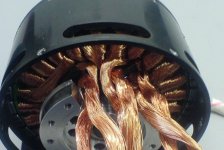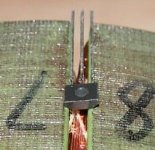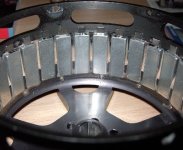Biff
100 W
olaf-lampe said:@Biff
I conclude that a low voltage/high current application would be best then? Rewind the beast with a low turn count and thicker strands and pump some 300-400Amps through it.
-Olaf
The way it is wound right now would be good for a low voltage (30V, 300A) which would give around 4,000 RPM. Rewind it with 2x the turns would get you the same output power (speed and torque) at 60V, 150Amps and be easier to control. These are still just initial estimates, without real testing or proper simulation the heat production and heat extraction is hard to estimate so I could be way off.





